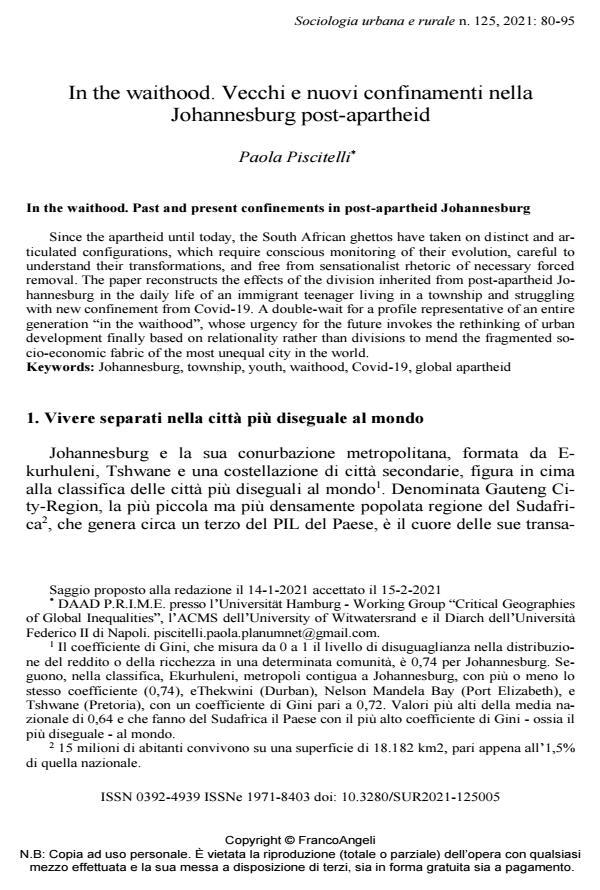In the waithood. Vecchi e nuovi confinamenti nella Johannesburg post-apartheid
Titolo Rivista SOCIOLOGIA URBANA E RURALE
Autori/Curatori Paola Piscitelli
Anno di pubblicazione 2021 Fascicolo 2021/125
Lingua Italiano Numero pagine 16 P. 80-95 Dimensione file 423 KB
DOI 10.3280/SUR2021-125005
Il DOI è il codice a barre della proprietà intellettuale: per saperne di più
clicca qui
Qui sotto puoi vedere in anteprima la prima pagina di questo articolo.
Se questo articolo ti interessa, lo puoi acquistare (e scaricare in formato pdf) seguendo le facili indicazioni per acquistare il download credit. Acquista Download Credits per scaricare questo Articolo in formato PDF

FrancoAngeli è membro della Publishers International Linking Association, Inc (PILA)associazione indipendente e non profit per facilitare (attraverso i servizi tecnologici implementati da CrossRef.org) l’accesso degli studiosi ai contenuti digitali nelle pubblicazioni professionali e scientifiche
Dal regime dell’apartheid ad oggi, i ghetti sudafricani hanno assunto configurazioni distinte e articolate, che richiedono un monitoraggio consapevole della loro evoluzione, attento a carpirne le trasformazioni e scevro da retoriche sensazionalistiche di necessaria rimozione forzata. L’articolo ricostruisce gli effetti della divisione ereditata dalla Johannesburg post-apartheid nella vita quotidiana di un’adolescente immigrata in una township alle prese con il nuovo confinamento da Covid-19. Un’attesa nell’attesa per un profilo rappresentativo di un’intera generazione "in the waithood", la cui urgenza di futuro invoca il ripensamento di uno sviluppo urbano fondato sulla relazionalità e non sulla divisione per ricucire il frammentato tessuto socio-economico della città più diseguale del mondo.
Parole chiave:Johannesburg, ghetti sudafricani, giovani, "waithood", Covid-19, apartheid globale.
Paola Piscitelli, In the waithood. Vecchi e nuovi confinamenti nella Johannesburg post-apartheid in "SOCIOLOGIA URBANA E RURALE" 125/2021, pp 80-95, DOI: 10.3280/SUR2021-125005